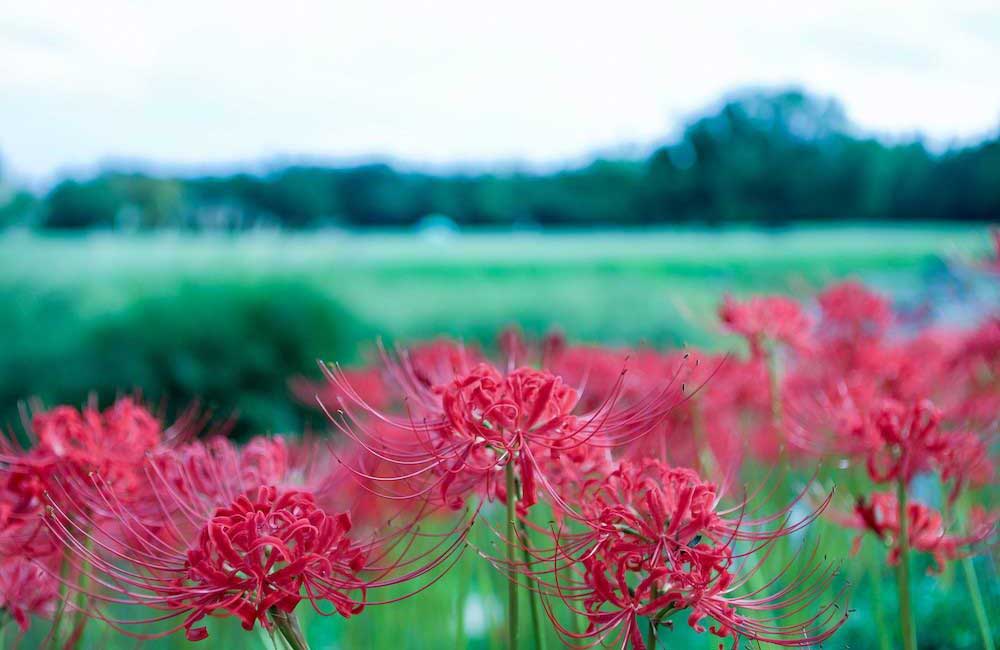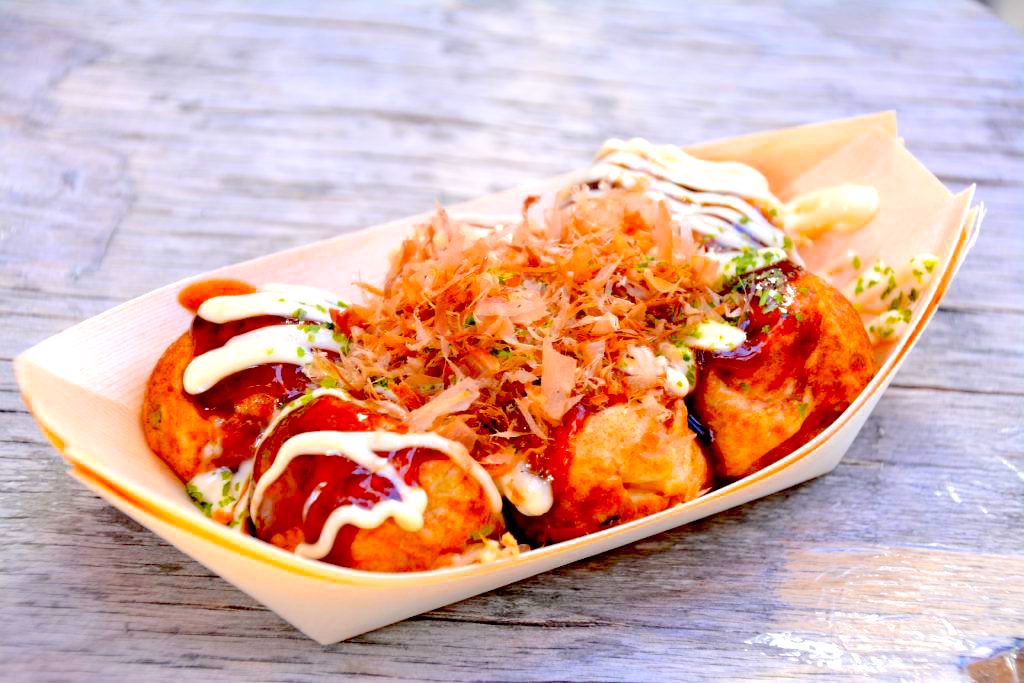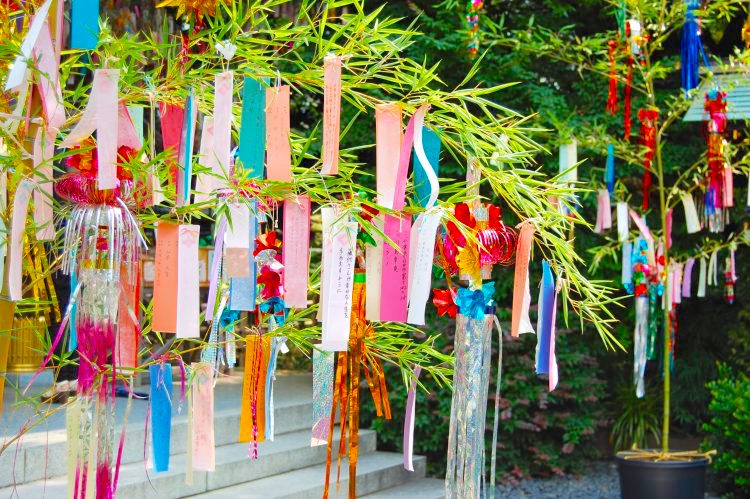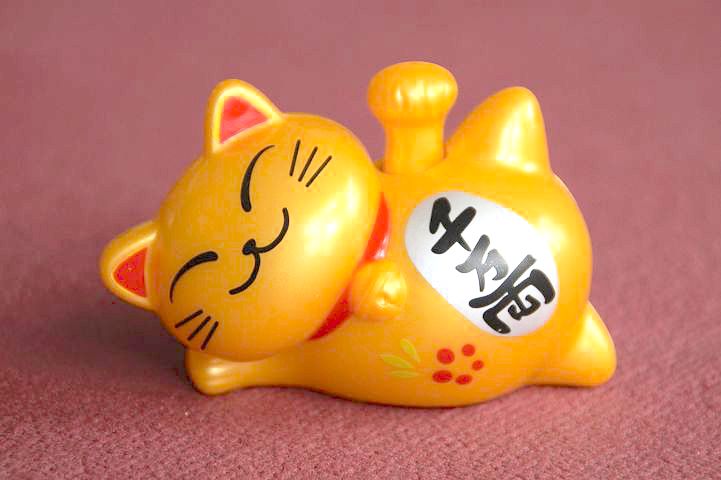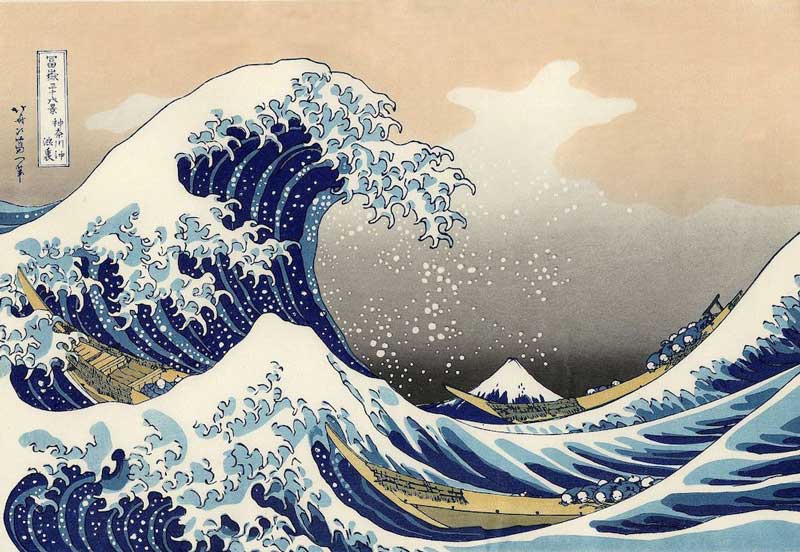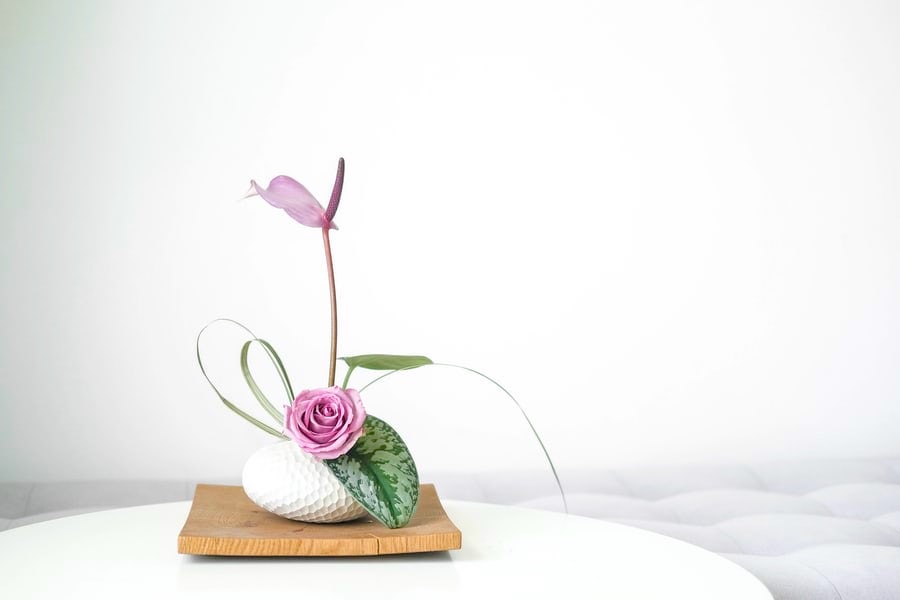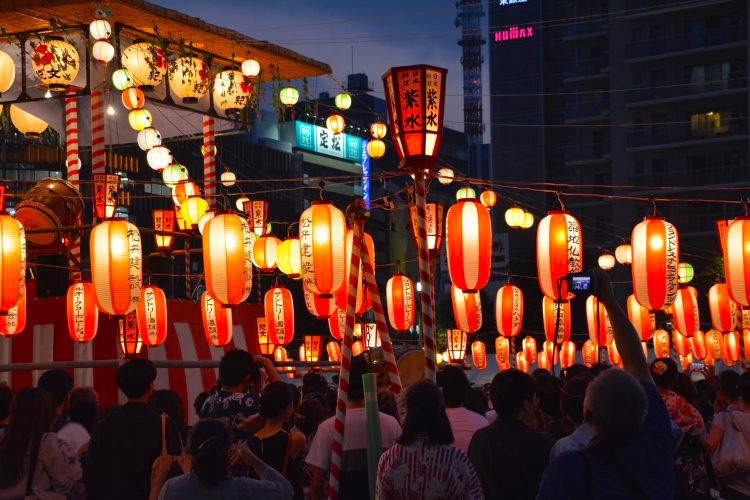
毎年夏の時期になると、日本各地で夏祭りが開催されます。
日本の夏は蒸し暑いですが、焼きそば、たこ焼き、チョコバナナなどを頬張りながら、夜空を彩る打ち上げ花火を見るのは楽しいものですよね。
今回は、日本の夏祭りと花火大会を英語で説明する表現をご紹介していきます。
ご興味のある方は、当サイトで 英語クイズ(5000問) を出題しておりますので是非ご覧ください。
目次
夏祭りの簡単な説明
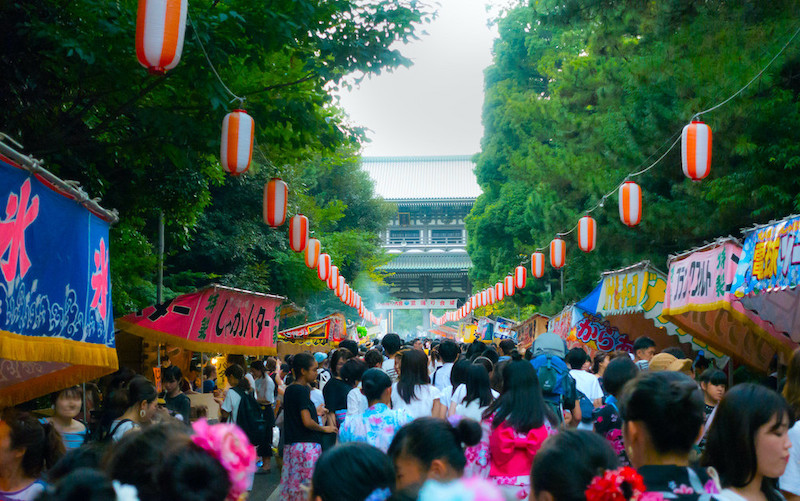
もともと「お祭り」というのは、昔の人々が厄除けや豊穣を願い、神仏に感謝するという儀式的な催しでしたが、それが時代の流れとともに賑やかになってきたと言えます。
Festival translates to “Matsuri” in Japanese.
(Festival は日本語で「お祭り」と訳されます。)
Matsuri means a Shinto ritual of praying to or giving thanks to the deities for a rich harvest.
(お祭りとは、豊作を神様に祈ったり感謝したりするための神道の儀式です。)
As summer arrives, festivals are taking place everywhere in Japan.
(夏になると、お祭りが日本各地で開催されます。)
A festival held in shrines and temples is called “En-nichi”.
(神社やお寺で催されるお祭りは「縁日」と呼ばれます。)
En-nichi is a day thought to have a special relationship with Gods and Buddha.
(縁日に自社仏閣にお参りに行くと、神仏の特別なご利益があるといわれています。)
Especially in the evening, they are very crowded with people.
(特に夜は、多くの人々で混雑します。)
There are various kinds of stalls that sell food and games on a festival day.
(お祭りでは、様々な食べ物や遊びの屋台があります。)
At the festivals, there are rows of stalls called “yatai” or “demise.”
(お祭りでは、「屋台」や「出店」と呼ばれる露店が並びます。)
You can buy your favorite food and enjoy it while walking around.
(お気に入りの食べ物を買って、歩きながら楽しむことができます。)
Typical foods are “Takoyaki,” “Yakisoba,” “Watagashi,” and “Ringo-ame.”
(定番の食べ物はたこ焼き、焼きそば、綿菓子、りんご飴などです。)
Besides food, you can enjoy other activities at stalls such as “yo-yo,” “kingyo-sukui,” and “shateki.”
(食べ物の他に、ヨーヨー、金魚すくい、射的なども楽しめます。)
At the festivals, you can see a lot of people wearing cotton kimonos called “Yukata.”
(お祭りでは、浴衣を着た人も多く見かけます。)
Yukata are reasonably priced and good for souvenirs.
(浴衣はお値段も手頃で、お土産にも喜ばれます。)
盆踊り / Bon-odori
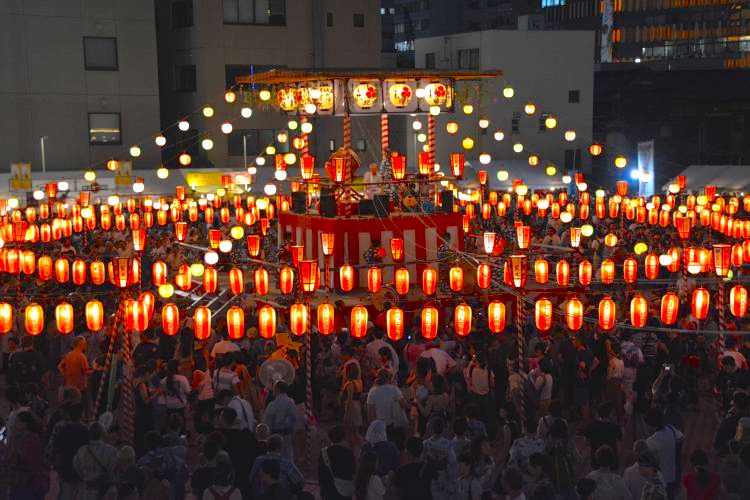
盆踊りは、Bon dance と訳されます。
文字通り「盆」の踊りで、年に一度この世界に帰ってくるご先祖様の霊を迎えてお祝いし、そして向こうの世界へ送る風習がもとになっていますが、現代では先祖供養よりも娯楽要素の強い催し物になっていると言えるでしょう。
Japanese summer festival traditions such as Bon-odori (the Bon dance) and fireworks festivals are rooted in Obon, as these were meant to honor the ancestors.
(盆踊りや花火大会などの日本の夏祭りの伝統は、祖先を敬う意味があったため、お盆がルーツとなっています。)
Bon-odori is for holding a memorial service for the spirits of ancestors.
(盆踊りは、先祖の霊を供養するためのものです。)
Bon-odori is the Japanese traditional folk dance for praying for the spirits of ancestors that come back during the Bon period.
(盆踊りとは、お盆の時期に帰ってくる先祖の霊への祈りのために行われる伝統的な舞踊です。)
At night during the period of obon, a scaffold is set up on temple grounds or in a plaza, and people in yukata dance in a circle to the flute and drum music.
(お盆の時期の夜になると、お寺や広場に櫓が組まれ、浴衣を着た人々が輪になって笛や太鼓の音楽に合わせて踊ります。)
神輿と山車
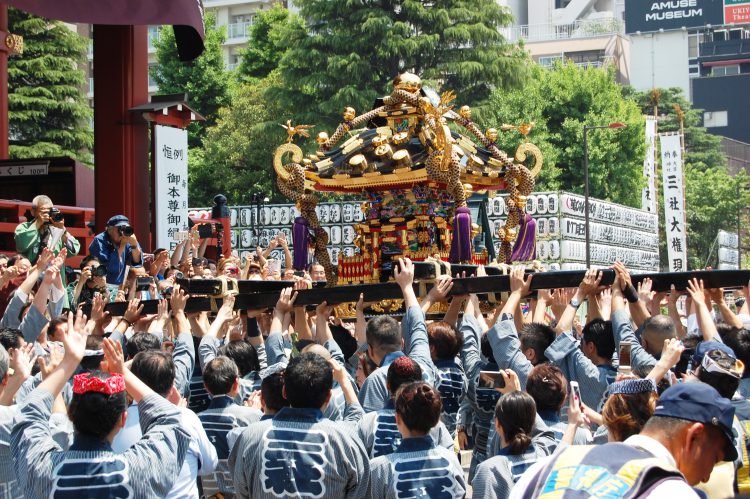
意外と説明するのが難しい御神輿と山車ですが、御神輿は一時的に神様が乗るためのもので、山車は神様のお供をするための台車という違いがあるそうです。
神輿 / Mikoshi
御神輿は、portable Shinto shrine または divine palanquin などと訳されます。
There is always “mikoshi” at a Japanese festival.
(日本のお祭りには「御神輿」がつきものです。)
Many Japanese festivals feature a parade of portable Shinto shrines called “mikoshi” or gorgeously decorated floats called “dashi.”
(日本のお祭りは、「御神輿」と呼ばれる移動式の神社や「山車」という豪華な台車が行進するのが特徴です。)
It is said that portable shrines and floats are the palanquins for the gods.
(御神輿や山車は、神様の乗り物といわれています。)
Mikoshi is a sacred palanquin of a god, and while we are carrying it, the spirit of the god is said to descend to it.
(御神輿とは神様の乗り物で、担いでいると神様が降臨するといわれています。)
Mikoshi is a portable Shinto shrine, which is carried on the shoulders of local people during a festival.
(御神輿は移動式の神社で、お祭りの際に地域の人々が肩に担ぎます。)
Mikoshi began in desperate times of epidemic and disaster to purify the neighborhood.
(御神輿は、疫病や天災のあったときに、地域を清めるために始まりました。)
“Koshi” in Japanese means a palanquin, they were widely used by the nobility in the past. So it is called “Mikoshi” because it is God’s “Koshi”.
(Koshi とは日本語で輿のことで、その昔貴族の乗り物として広く使われていました。それで神様の乗り物として「神輿」と呼びます。)
Men wearing headbands and happiness coats carry mikoshi on their shoulders, shouting “Wasshoi, wasshoi.”
(はちまきを巻いてはっぴを着た男性たちが「わっしょい!わっしょい!」と叫びながら御神輿を担ぎます。)
Portable shrines are thought to convey the virtues of the gods and bring good luck to local people.
(御神輿は神様の徳を伝え、地域の人々に幸運をもたらすと考えられています。)
山車 / Dashi
山車(だし)は、英語で float といいます。
“Dashi” is a float decorated with ornaments like dolls and flowers.
(山車とは、人形やお花などの飾りをつけた台車のことです。)
It is believed that the spirit of a deity comes down to the Hoko (halberd).
(神様が鉾に降臨すると信じられています。)
Dashi is a float aimed at accompanying gods in festival parades.
(山車とは、お祭りの巡行で神様のお供をするための台車です。)
The floats at the Gion Festival in Kyoto are representative examples.
(京都の祇園祭の「山鉾」はその代表的なものです。)
・はちまき:headband
・はっぴ:happi coat (traditional Japanese short jacket worn at a festival)
・股引:long johns
・足袋:Japanese-style socks
・雪駄:(Japanese leather-soled) sandals
屋台(出店)
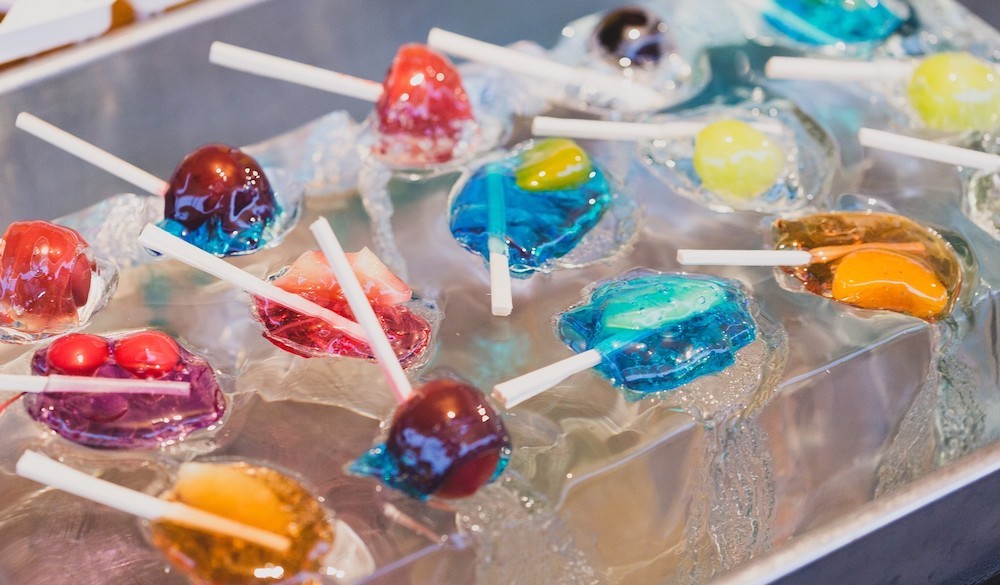
賑やかな雰囲気と夏の開放的な気分が相まって、食べ物も遊びもより楽しく感じられるのが夏祭りの醍醐味と言えるでしょう。
外来語ではない日本独自の食べ物を英語で伝えるときは、まず日本名で言って、相手が分からなければ説明を添えるようにすると良いでしょう。
定番の食べ物
| 焼きそば(yakisoba) | stir-fried noodles |
| たこ焼き(takoyaki) | octopus balls |
| わたあめ(wata-ame) | cotton candy |
| カルメラ焼き | foam candy |
| べピーカステラ | Japanese sponge cake |
| べっこう飴(bekko-ame) | bekko candy |
| アメリカンドッグ | corn dog |
| りんご飴(ringo-ame) | candied apple |
| チョコバナナ | chocolate-covered banana |
| ラムネ(ramune) | Japanese soda |
定番のゲーム
| 輪投げ(wanage) | ringtoss |
| お面 | mask |
| 金魚すくい | scooping goldfish または goldfish scooping with a paper scooper など |
| ヨーヨー釣り | hooking yo-yos または water-filled balloon fishing など |
| スーパーボールすくい | bouncy ball scooping |
| 射的(shateki) | gun shooting, shooting booth, shooting gallery など |
| くじ引き | lottery stall |
| うちわ | traditional Japanese paper fan または Japanese hand fan など |
金魚すくい
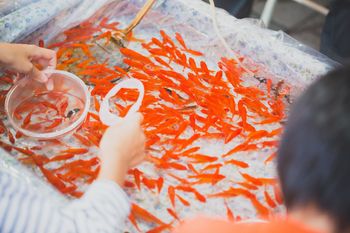
Kingyo-sukui, meaning scooping goldfish, is a traditional Japanese game seen at summer festivals all across Japan.
(金魚すくいは、日本の夏祭りで見られる伝統的な遊びです。)
“Kingyo” means goldfish, and “sukui” means scooping.
(Kingyo は金魚で、sukui はすくうことを意味します。)
You use a special tool called “poi,” which is made of a piece of thin paper that can be easily torn when it comes into contact with water.
(お水で簡単に破けてしまう薄い紙でできた「ポイ」と呼ばれる道具を使います。)
With the goldfish scooping, the challenge is to catch as many fish as possible before the paper tears.
(金魚すくいの難しさは、紙が破ける前にできるだけたくさんの金魚をすくうことです。)
If you get goldfish, you can take them home in bags provided by the stall.
(金魚をすくうことができたら、お店の袋に入れて持ち帰ることができます。)
射的
Shateki is a game where you use a toy rifle to target the prize you want and shoot at it.
(射的は、おもちゃのライフル銃を使い、欲しい景品を狙って撃つゲームです。)
The bullet is made of cork, and if you hit the target, you’ll get it as a prize.
(弾はコルク製で、狙ったものに当たればその景品を獲得することができます。)
花火大会 / Hanabi-taikai
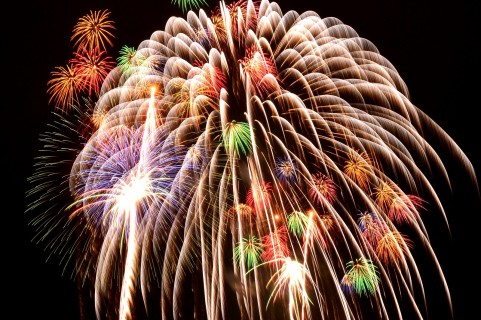
世界で最も華麗で精巧とも評される日本の花火大会は、日本の夏を代表する風物詩のひとつです。
日本における花火の起源は正確には分かっていませんが、17世紀初頭に外国人が花火をするところを徳川家康が見物したという説があります。
日本最古の花火大会は「隅田川花火大会」で、江戸時代に人気のあった花火業者の「玉屋」と「鍵屋」がその腕を競い合い、江戸の人々はどちらの花火がより良いかを「たまや!」「かぎや!」と叫んでいたのだそうです。
花火大会は英語で、
- fireworks festival
- fireworks show
- fireworks display
などと訳されます。
I want to go to the fireworks display in yukata.
(浴衣を着て花火大会に行きたいな。)
It is said that the origin of fireworks is when niter was discovered in ancient China in the 3rd century BC.
(花火の起源は、火薬のもととなる硝石が発見された紀元前3世紀の古代中国にあるといわれています。)
Fireworks and guns were introduced to Japan in the 16th century by the Portuguese.
(花火と鉄砲は16世紀にポルトガル人によって日本に伝えられました。)
Tokugawa Ieyasu, the founder of the Tokugawa regime, is said to be the first person in Japan who saw fireworks.
(江戸幕府の初代将軍、徳川家康は日本で初めて花火を見た人物といわれています。)
The oldest recorded fireworks festival in Japan is said to have been the Sumida River Fireworks Festival.
(日本最古の花火大会の記録は、「隅田川花火大会」といわれています。)
The origin of the festivals was the exhibition of fireworks held competitively between “Tamaya” and “Kagiya,” which were fireworks makers in the Edo Period.
(花火大会は、江戸時代の花火業者であった「玉屋」と「鍵屋」が競って花火を打ち上げたのが起源です。)
When it becomes summer, fireworks festivals are held in many parts of Japan.
(夏になると、日本各地で花火大会が開催されます。)
Fireworks festivals are often held on the beaches of seas and rivers.
(花火大会は、海岸や川辺などでよく行われます。)
Fireworks festivals are a summer staple/symbol in Japan.
(花火大会は、日本の夏の定番です。)
The various shapes, colors and powerful impact of the fireworks attract huge crowds.
(花火の様々なかたち、色そして迫力は多くの観客を魅了します。)
Fireworks are one of the traditional arts of Japan that can be proudly presented to the world.
(花火は、日本が世界に誇る伝統芸能のひとつです。)
The spectacle of fireworks blooming and disappearing in a moment can be taken as a symbol of graceful resignation or transiency which so many Japanese people value.
(花火が一瞬で咲いて消えていく光景は、日本人独特の価値観である潔さや儚さの象徴に例えられています。)
最後に
日本のお祭りの雰囲気は、海外の方々にとって大変独特で魅力的に映るようです。
今回の記事が、御神輿の意味や盆踊りの起源、美しい花火、そして屋台の美味しいスナックやゲームなど、日本の夏の楽しさを英語でお伝えする手助けになれば幸いです。
